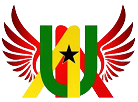Successful offer of service in a consistent and timely manner shall remain the backbone of United Africa Airways. It is therefore important for us to partner an experienced operator who knows the African terrain very well and has the capability to offer back-up service and engineering support. This will be the guiding principle in all leasing decisions for our scheduled passenger services and charters (passenger and freight).
Considering the opportunities available to United Africa Airways described earlier and based on what we consider as sound business assumptions discussed in this chapter, the company arrived at the projections contained in this document for its operations, and consequently the financing decisions.
Operational Strategy Considerations
Accra will be the base and main hub of the operations, with all intra-African flights operating day-return services, except the Johannesburg, U.S.A, London and Germany flight. The West Coast flights will depart in the morning after, consolidating loads from the previous night’s international arrivals.
As much as possible, UAA will employ crew representing a cross-section of the countries we operate into for operational and commercial advantages.
Enough sets of crews are going to be utilized to optimize our operations, with emphasis on quick turn-around to maximize equipment utilization. Also, as much as possible, crew shall be scheduled to take their mandatory rest periods in Accra.
Dispatch duties will be outsourced to Handling Companies to take advantage of the experience such entities have in that field.
Operating contribution is heavily dependent on this strategy, and once altered could negatively affect the projected profit margin.
The above strategy issues are under-pinned by the broad aviation strategies as explained below:
- The Cost-Effective Concept
In the airline industry, it is known that two ways have consistently been successful at making money:
- The first is through a network approach based on the hub and spoke operations.
- The second is through low-cost approaches for which there are two distinct models: the traditional low-cost model which has been that of point-to-point operations, and the second one being the charters or non-scheduled airline operations.
The traditional point-to-point strategy that identifies densely populated traffic movements approach shall be adopted for our passenger services.
The emphasis is to be able to offer affordable rates and still achieve profitability by operating efficiently.
We plan to gain lower lease rates by signing long term contracts. Leasing can be an expensive cost item that little can be done about by way of reduction. We hope to leverage on our negotiation skills to get all leases at the minimum cost possible.
Again, we hope to achieve low cost of operations by reducing overheads by keeping lean our employees list. Also, marketing cost shall be reduced as much as possible by causing our GSA to deal with, if necessary, our scheduled passenger operations. The passenger operations as has been mentioned shall be specifically targeted and would be based on relationship marketing.
The above analyses show how we intend to maintain cost levels per available seat kilometer or available ton kilometer. Looking at the national economy and the local purchasing power, the cost-effective strategy would be the way out to attract the passenger volumes. It is also the best approach to ward off competition and maximize revenue on the routes.
